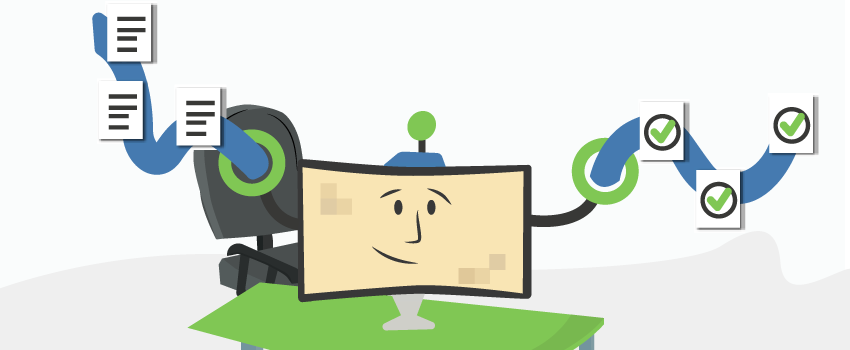
5 Service Catalog And Self-Service Tips
Hey! I’ve been mulling over the topics of service catalog and self-service, but I didn’t have my IT Guy hat on, I’ve been using my personal, I guess you could say “consumer,” experiences to think of the corporate service catalog and self-service facilities from the end user, consumer, or customer point of view.
I urge you to try this. And, more importantly, to speak to your end users, consumers, and customers about their needs and wants for such facilities.
We are constantly using service catalogs and self-service outside of the workplace
I guess many of us don’t even think about it – whether shopping at Amazon.com or searching for information on the GoIsrael.com website, many of the online facilities we use are self-service entry points for:
- Checking possible options against a given need
- Purchasing goods or services
- Accessing services
- Finding help or information
- Providing feedback
- Submitting changes
We use service catalogs or self-service portals, but we don’t care. We just care about how they work in terms of intuitiveness and ease-of-use, simplicity, and whether the things that need to be achieved get achieved. For us, as consumers, it’s all about getting what we need in the easiest way possible. Otherwise we will just get in the car, pick up the phone, or send an email.
We use #ServiceCatalogs or self-service portals, but we don’t care. We just care about how they work in terms of intuitiveness and ease-of-use, simplicity, and whether the things that need to be achieved get achieved.… Click To TweetAnd service catalogs are nothing new
A quick domain look up shows that the servicecatalog.com domain name has been registered since 2004 and servicecatalogs.com since 2003. The latter of which has some handy reference material on the topic. And if we look at Amazon.com again, it was founded in 1994. So why has it taken so long for corporate IT organizations to embrace service catalogs and self-service?
IT service catalogs really came to the fore with the publication of ITIL v3, the ITSM best practice framework, in 2007. But it has been the mix of interest in self-service, self-help, social support, and knowledge management combined with the need to simultaneously reduce costs and improved service that have elevated the adoption of corporate IT self-service and service catalogs.
Although at this point it’s probably worth pointing to Rob England’s (aka the IT Skeptic) blog on service catalogs versus service request catalogs. It’s an important distinction to make and I urge you to read Rob’s blog. I almost went back to the previous paragraphs to change “service catalog” to “service request catalog” but then I’d miss the opportunity to promote Rob’s blog.
My five top tips for service request catalog and self-service
- Think “customer first” – in IT we can often be driven by supply rather than demand. So are we creating a service request catalog and self-service facility because we think it’s a good thing to do or are we working with our customers to meet their wants and needs? Many organizations have created service request catalog and self-service facilities only for usage to be low. Learn from their mistakes, and create something based on demand not supply.
- Plan for use and change – remember the CMDB initiatives of the last decade? As with them, this isn’t just a data collection exercise. Firstly, plan for use – and this just isn’t the use by end users, but also by the IT organization in terms of leveraging use data for demand management and cost management. Secondly, you are creating something that will need to change over time due to both technology and business change. Make sure that the processes are in place to change, add, and subtract offerings and their attributes such as cost and service level targets.
- Start in a focused way – again as with the CMDB initiatives of the last decade, you can start wide and shallow or narrow and deep. Understand what will suit your organization’s, and end users’, needs best. It’s common practice to start with a subset of popular services or offerings and to ramp up from there based on usage and feedback. Try not to stretch yourself too far initially, remember that a failed launch will make it even harder to get end users to return for a second attempt to encourage usage.
- Describe offerings in terms of what gets consumed not what gets created. End users don’t want to request “IT things” in the main so ensure that what’s offered, and how they are described, is done in an end-user-friendly way. Speak with your end users to find out how they describe their needs, in business terms, rather than assuming that they will know what they need in IT terms. Hopefully a search facility will help but still try to make the needs-based language the priority when naming available products and services. Also, wherever possible, try to limit the available options based on role, department, or geography – if a particular product or service isn’t available to an end user then it shouldn’t be offered.
- Think beyond the IT service desk. In fact think beyond IT. Notwithstanding bullet point 3 about trying to do too much too soon, think about self-service from an end user point of view. They shouldn’t have to worry about which part of the business supplies phones, or pensions, or paperclips. They shouldn’t have to go to multiple self-service facilities for different goods or services. So plan for the extension of the self-service capabilities at the outset rather than allowing it to be a belated addition when someone suggests that a HR employee portal is needed. Not only will this deliver a better employee experience, it will also allow the organization to benefit from increased efficiency and effectiveness, and economies of scale.
Other recommended, and independent, information sources
Finally, you might want more information. I suggest the following free sources:
- Barclay Rae: Why bother with a service catalog?
- The ITSM Review: Assessment Criteria for Service Catalogue
- The IT Skeptic: Sample ITIL Service Catalogue documents
- Pink Elephant: IT Service Catalog Examples
Now if only we could all agree to spell “catalog,” or “catalogue,” the same way, maybe I should just stick with self-service?






